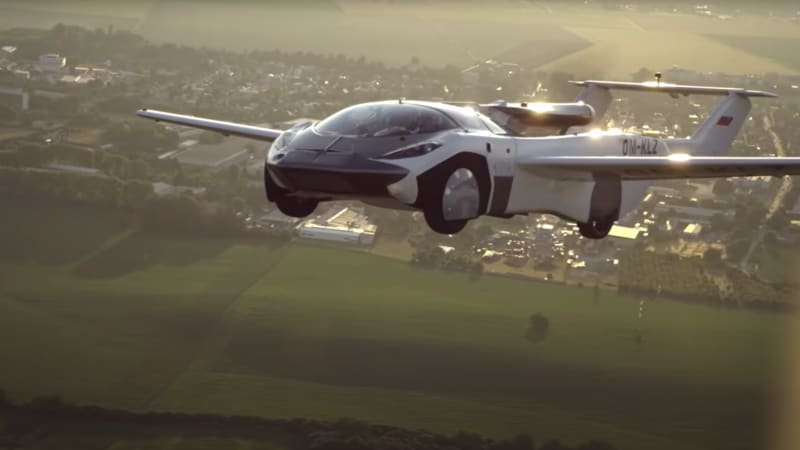The derby by a dozen or more companies — Hyundai and GM, and Stellantis, Mercedes, Audi, you name it — to launch a “flying car” has not really involved anything you’d call a “car” that could fly. Instead, they are pursuing electric vertical takeoff and landing aircraft (eVTOL) that could taxi paying passengers from point A to point B, after which those folks would need to catch an Uber or something. But recently, a machine called AirCar actually performed both tasks implied by that name — flying between two airports in Slovakia, then transmogrifying into a road car and driving off.
It’s best just to show you, in this video above that was posted yesterday.
The AirCar prototype is built by a Slovakian company, Klein Vision, which launched the vehicle from Nitra and landed 35 minutes later in Bratislava. Then, the eponymous inventor and pilot Stefan Klein folded the aircraft’s wings and tucked its tail, a transition that takes about three minutes. And poof, it’s a car. Which actually drove off, to the applause of a throng of well-wishers.
Klein is said to have been working on a series of prototypes for 30 years, and has racked up 40 air hours. This was the craft’s 142nd landing, but its first inter-city flight. During its time in the air, the craft cruised at around 90 knots (105 mph). Klein said it has flown to 8,200 feet and has made 45-degree banking turns during testing, though it did nothing flashy on this outing. It’s powered by a 160-horsepower BMW engine and a simple fixed-pitch propeller. Like many small aircraft these days, it also has a ballistic parachute, just in case.
Klein says next up is a 300-horsepower model with a variable-pitch propeller. He says it will be capable of cruising at 160 knots to a range of over 600 miles, will achieve full commuter certification from European aviation regulators and will also be street-legal.
The challenge there, as always in achieving the “flying car” dream, is to balance the needs of an aircraft, not the least of which is lightness, with what it takes to be certified as roadworthy, particularly safety equipment and crashworthiness that can add a weight penalty. In the video, the AirCar prototype certainly looks like a car — a heavy car even — when it’s airborne. Compare it to the chase planes alongside it. Although it is kind of cute how the rear wheels keep spinning when it’s up there.
Also, like any small plane, the AirCar needs a runway to take off and land. The eVTOL approach being taken by the major players eliminates the challenges of being an automobile, or of being limited to runways. At least one startup, Terrafugia in Boston, however, has also spent years pursing the air-car twofer. Its vehicle, the Terrafugia Transition, earned an FAA light-sport airworthiness certification earlier this year.
Related video:
